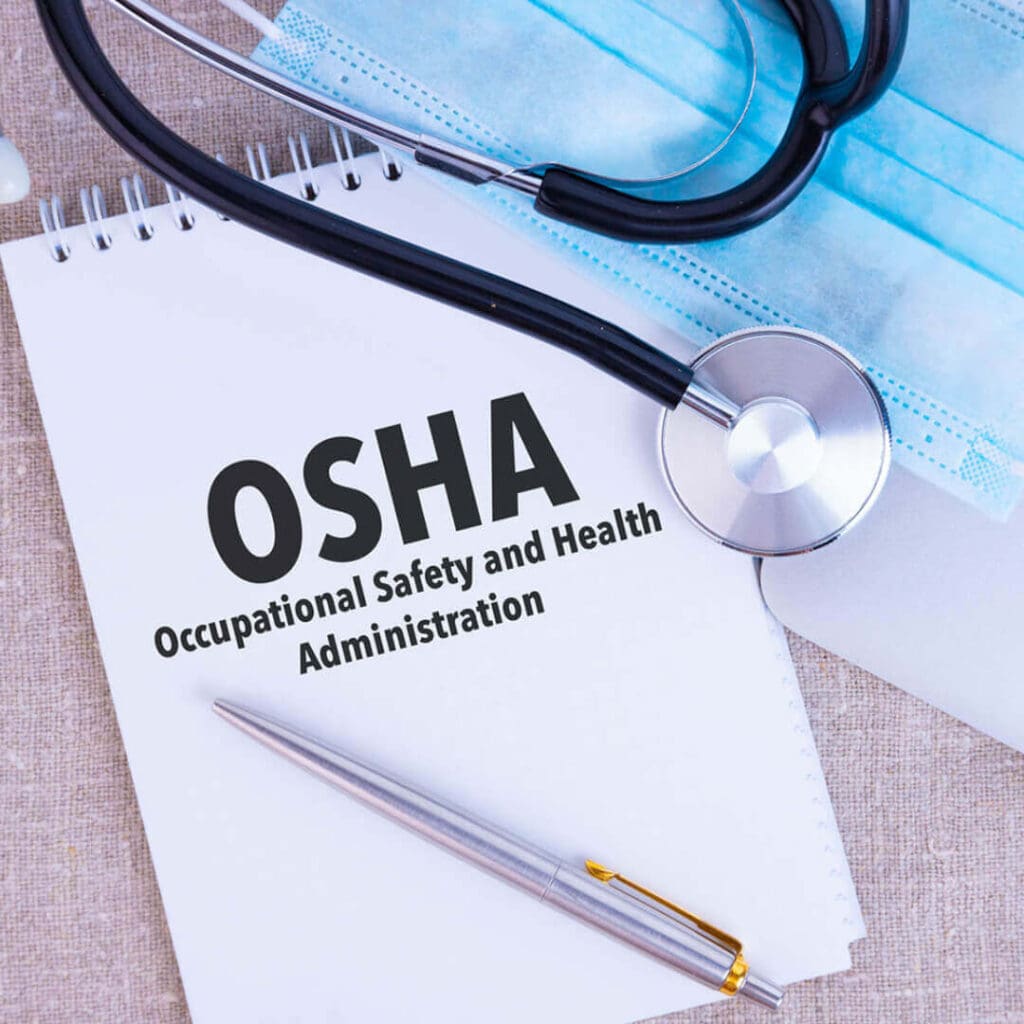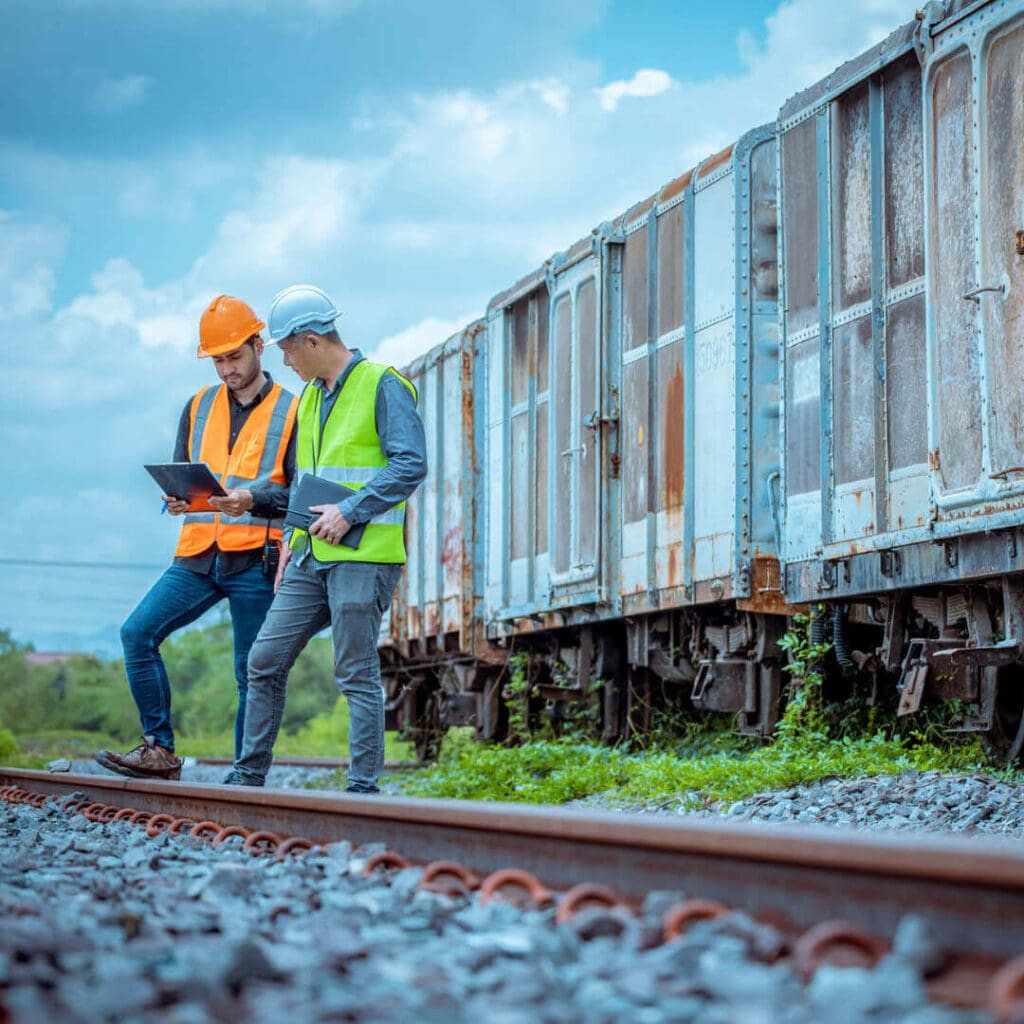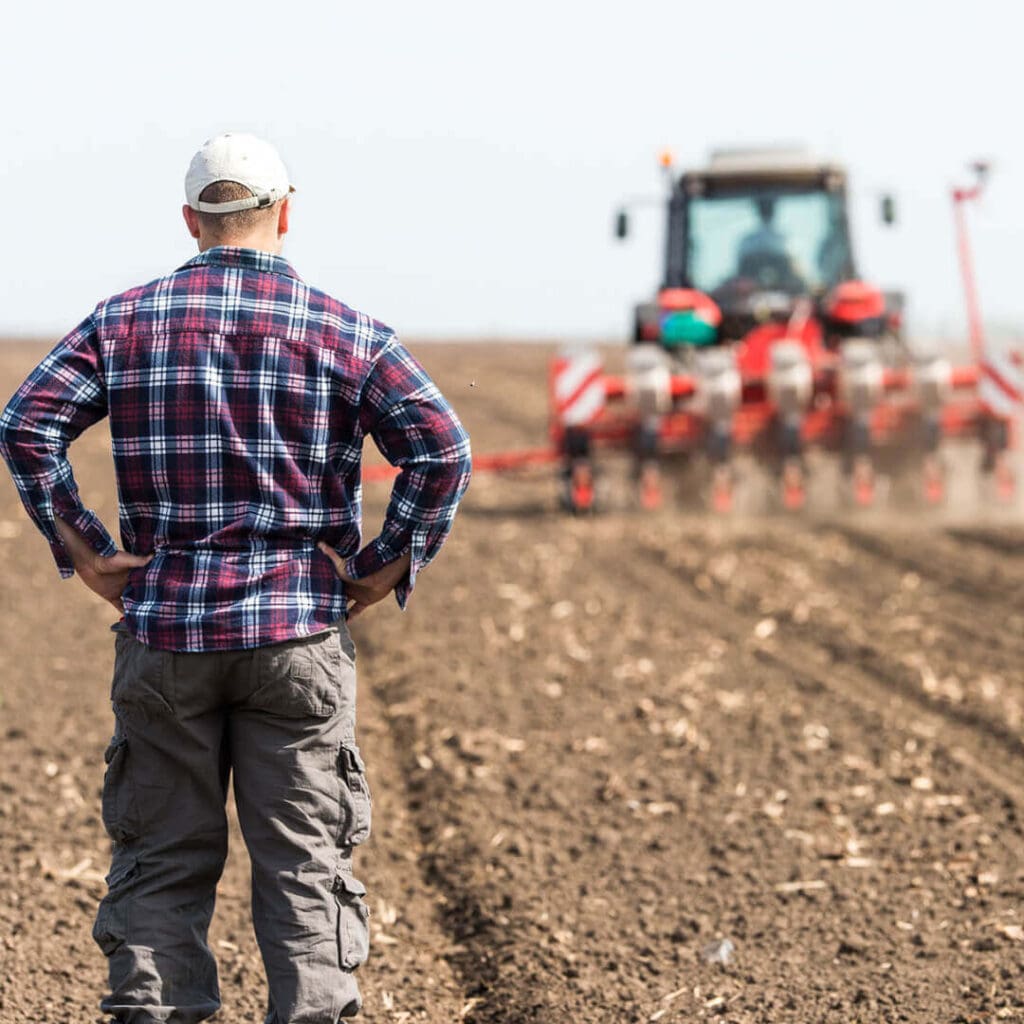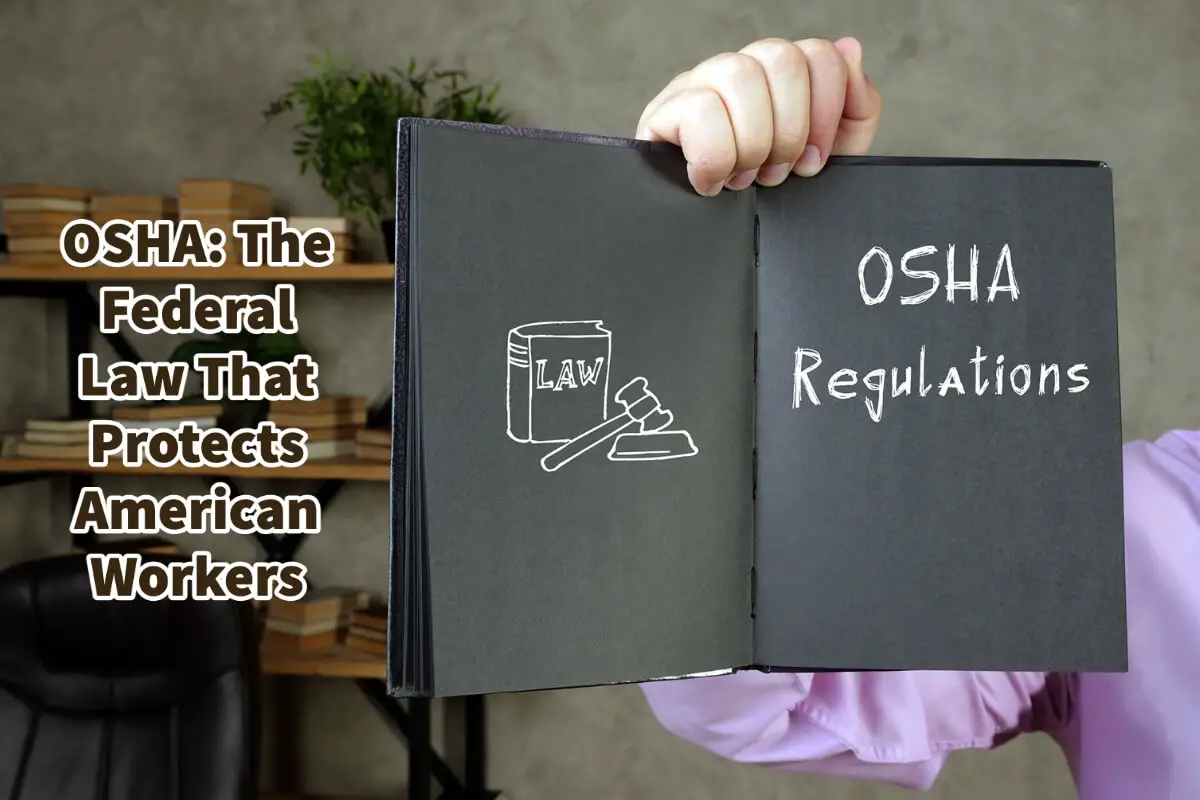Someone in Vietnam recently told us we must comply with OSHA rules to export UL-certified lamps to the United States. Because I had never heard about this, I started investigating and learning about OSHA and who they are.
OSHA, which stands for Occupational Safety and Health Administration, is a federal law enacted in the United States in 1970. At the heart of this law is to look at the protection and safety of American workers in companies throughout the United States and US jurisdictions. The law focuses on a few areas for workers’ safety.
Read on to learn about OSHA and why this law matters for American Workers.
Table of Contents
- OSHA’s Federal Law For American Workers
- 5 Top Areas That OSHA Is Concerned With
- OSHA Covers All Workplaces In the United States With Some Exceptions
- OSHA’s Jurisdiction And Reach
- Frequently Asked Questions About OSHA
- Related Content
OSHA’s Federal Law For American Workers
The Occupational Safety and Health Administration (OSHA) is a federal law created in the United States to protect American workers from workplace injuries and illnesses. OSHA was established in 1970 under the Occupational Safety and Health Act, signed into law by President Richard Nixon.
The law was created in response to the high number of workplace injuries and deaths at the time and aimed to ensure that workers had the right to a safe and healthy work environment. The law is set up to help give American workers certain rights and ensure they are safe at work.
Employers must follow the rules of OSHA to ensure their workers are safe.
OSHA covers a wide range of areas related to workplace safety and health, including but not limited to construction, manufacturing, healthcare, transportation, and agriculture. The administration sets and enforces safety standards, provides training and education, and offers outreach and assistance to employers and workers.
5 Top Areas That OSHA Is Concerned With
Even though OSHA impacts all American workers, there are five main areas that OSHA will look at. Even though OSHA looks at more than these five areas, these are some areas where they continue to have the most significant impact.
Construction And OSHA Requirements
Construction is one of the most dangerous industries, with a high rate of workplace injuries and fatalities. OSHA sets construction site safety standards, including personal protective equipment (PPE), fall protection, and scaffolding requirements.

The administration also requires employers to train workers on these safety standards and have a plan for responding to emergencies.
Manufacturing And OSHA Requirements
Manufacturing facilities can present a variety of hazards, including machinery and equipment, hazardous materials, and ergonomic risks. OSHA sets safety standards for manufacturing facilities, including machine guarding, chemical safety, and ergonomics requirements.

The administration also requires employers to train workers on these safety standards and have a plan for responding to emergencies.
Healthcare And OSHA Requirements
Healthcare workers are exposed to various hazards, including infectious diseases, chemical exposures, and ergonomic risks. OSHA sets safety standards for healthcare facilities, including bloodborne pathogens, hazardous materials, and ergonomics requirements.

The administration also requires employers to train workers on these safety standards and have a plan for responding to emergencies.
Transportation and OSHA Requirements
Transportation workers face a variety of hazards, including motor vehicle accidents, falls, and hazardous materials. OSHA sets safety standards for transportation, including requirements for commercial motor vehicles, loading and unloading, and dangerous materials.

The administration also requires employers to train workers on these safety standards and have a plan for responding to emergencies.
Agriculture And OSHA Requirements
Agriculture workers face a variety of hazards, including machinery and equipment, heat stress, and exposure to pesticides. OSHA sets safety standards for agriculture, including requirements for machinery guarding, chemical safety, and heat stress prevention.

The administration also requires employers to train workers on these safety standards and have a plan for responding to emergencies.
OSHA Covers All Workplaces In the United States With Some Exceptions
OSHA’s jurisdiction covers all workplaces in the United States, including those in the private sector, state and local governments, and federal agencies. That means anyone working anywhere in the United States, even at Starbucks or Walmart, is also covered under OSHA and OSHA requirements.
However, some industries are exempt from OSHA’s requirements, including self-employed individuals, immediate family members of farm employers, and workplaces covered by other federal agencies. So even though OSHA covers most workplaces, there are also some critical exceptions to OSHA.
IOSHA is critical in protecting American workers from workplace injuries and illnesses. The administration’s safety standards, training requirements, and enforcement actions have helped reduce workplace fatalities and injuries.
OSHA’s jurisdiction covers a wide range of industries, and all workplaces in the United States must comply with its regulations.
OSHA’s Jurisdiction And Reach
As a federal law of the United States, OSHA’s jurisdiction is limited to workplaces within the country, its territories, and areas under its jurisdiction. This means that OSHA’s regulations, standards, and enforcement actions do not apply to workplaces in other countries.
The United States Department of Labor oversees OSHA and has no jurisdiction outside the country’s borders. However, OSHA has established global partnerships with other countries to promote and enhance workplace safety and health. These partnerships share best practices, research, and expertise on safety and health issues affecting workers worldwide.
Additionally, multinational companies operating in the United States are subject to OSHA’s regulations and standards for their U.S.-based operations. Even though a company may be headquartered in another country, it must comply with OSHA’s requirements for its U.S. workforce.
It is also worth noting that the United States has entered into several international treaties and agreements related to workplace safety and health. These agreements promote the development of safety and health standards, research, and cooperation between countries to improve working conditions globally.
While OSHA’s jurisdiction is limited to the United States and its territories, the administration has established partnerships with other countries. It works with multinational companies operating in the United States to promote workplace safety and health globally. Additionally, the United States has entered into international agreements to promote safety and health standards worldwide.
Generally speaking, manufacturers, contractors, and others operating outside the United States, even if they are US Companies or selling into the United States, do not need to abide by the rules of OSHA but should abide by the labor and other laws of the country they are operating. This is similar to how foreign companies operating in the United States must also abide by local laws.
Find out more about how Mondoro can help you create, develop, and manufacture excellent home decor and furniture products – don’t hesitate to contact me, Anita. Check out my email by clicking here or become a part of our community and join our newsletter by clicking here.
Mondoro gives out a FREE Lookbook to anyone interested. You can receive a copy of our latest Lookbook by clicking here.
Listen to our Podcast called Mondoro Company Limited. You can find it on all major podcast platforms. Try out listening to one of our podcasts by clicking here.
Subscribe to our Mondoro Company Limited YouTube Channel with great videos and information by clicking here.
Frequently Asked Questions About OSHA
What are some common workplace hazards that OSHA regulates?
Some common workplace hazards that OSHA regulates include falls, electrical hazards, hazardous chemicals, and unsafe equipment.
What is an OSHA inspection, and what triggers it?
An OSHA inspection is when an OSHA compliance officer visits a workplace to assess whether the employer complies with OSHA regulations. An employee complaint, a severe accident, or a referral from another agency can trigger an inspection.
What is the OSHA 300 log, and what is its purpose?
The OSHA 300 log records all work-related injuries and illnesses that occur in a workplace. Its purpose is to help employers track and analyze workplace safety trends and identify areas for improvement.
Who is responsible for complying with OSHA regulations?
Employers are responsible for complying with OSHA regulations and providing a safe and healthy work environment.
What are some OSHA requirements for safety training?
OSHA requires employers to provide safety training to employees to help them recognize and avoid workplace hazards. Training must be provided in a language and format that employees can understand.
What is a hazard communication program, and what does it involve?
A hazard communication program is a set of policies and procedures that help employers identify and communicate information about hazardous chemicals in the workplace. It involves creating a written agenda, labeling dangerous chemicals, and training employees.
What is the OSHA whistleblower protection program?
What is the OSHA whistleblower protection program? The OSHA whistleblower protection program protects employees who report violations of OSHA regulations from retaliation by their employers.
What is the OSHA recordkeeping standard, and what records must be kept?
The OSHA recordkeeping standard requires employers to keep records of work-related injuries and illnesses and to post a summary for all employees.
Can employees file a complaint with OSHA about workplace hazards?
Yes, employees can file a complaint with OSHA about workplace hazards. OSHA will investigate the complaint and take appropriate action if the complaint is valid.
What are the consequences of violating OSHA regulations?
Violating OSHA regulations can result in fines and penalties for employers. In some cases, OSHA may require employers to take corrective action to address the violations.
How can employers stay informed about OSHA regulations and compliance requirements?
Employers can stay informed about OSHA regulations and compliance requirements by regularly reviewing OSHA publications and guidance documents, attending OSHA training courses, and consulting with OSHA compliance experts. OSHA also provides free consultation services to help employers identify and address workplace hazards.
Related Content
What Are Some Inspiring Home Decor and Design Quotes?
The world is full of inspiration. Creativity is everywhere – in our homes, communities, and even the books we read. Inspiration can come in many shapes and many sizes.
Today we have some of our great pearls of wisdom in the form of inspiring quotes for home decor, design, and everyday living and learning.
You can discover more by reading our blog 51 Inspiring Home Decor, Design and Words of Wisdom, Our Curated Quotes by clicking here.
What Does It Mean to Have A Social Conscience?
A social conscience is about being concerned about society’s problems or injustices or caring about the less fortunate. Many worldwide suffer from extreme poverty by living on less than 1.9 USD per day. This is why we all must seek to find ways to have a social conscience and help those who are less fortunate. The gender that suffers the most in the world is women and girls. This is why at Mondoro, we seek to find ways to work with small women-based enterprises for our manufacturing needs.
You can find out more by reading our blog Having a Social Conscience, What Everyone Should Know by clicking here.
What Is Social Consciousness? 7 Reasons It Is Important
Social consciousness is about being aware of the problems and injustices of society and then trying to do something about them. It is about leading with moral and ethical leadership and looking to do good. A company with a social conscience believes in human dignity while considering the planet’s health.
You can discover more by reading What Is Social Consciousness? 7 Reasons It Is Important by clicking here.


